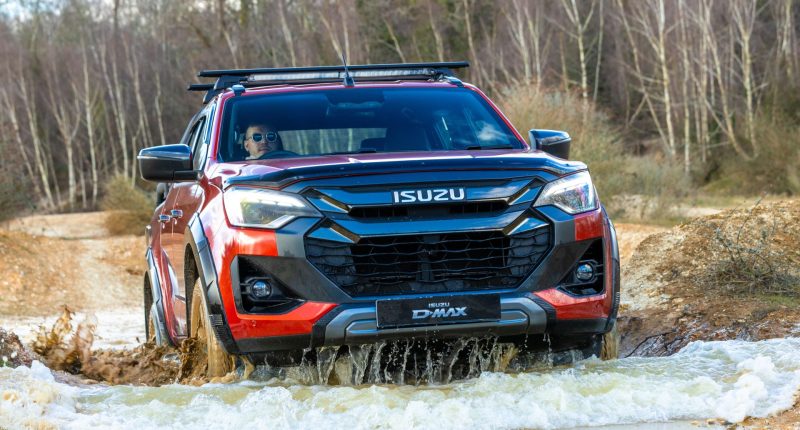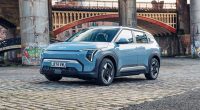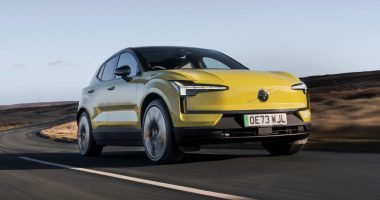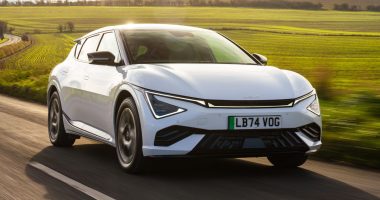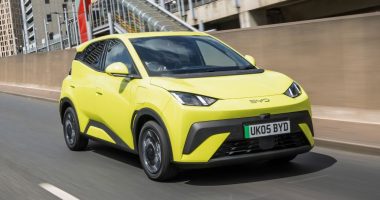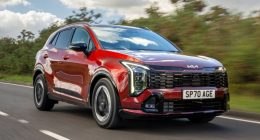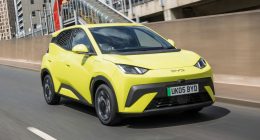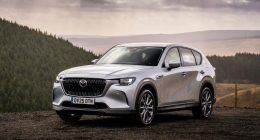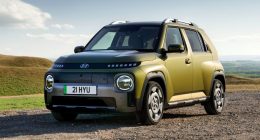It is true. Changes to the benefit-in-kind (BiK) tax rule has halted the surge in the sale of new pick-ups – but not every manufacturer is feeling the knock-on effect. Isuzu is doing a good job of bucking the trend, as figures for last year show.
From January to December, dealers shifted 6,600 examples of the D-Max, and with the vehicle receiving styling and cabin tweaks, the feeling is it can expect to at least consolidate its position in the market. There is a D-Max to suit every taste, from single and double cab to manual and automatic, but regardless, Isuzu bosses claim every single one can carry 1200kg, tow heavy trailers (2,500kg for two-wheel-drive single cabs, 3,500kg for all-wheel-drive double cabs), and find a way across most terrain, from gnarly building sites to mud strewn fields. Better still, the D-Max’s kerb weight falls under the threshold of owners not having to adhere to the reduced speed limit of 50mph on single carriageways and 60 on dual carriageways.
As already mentioned, Isuzu has been sure to offer a model to cover all bases, from the no-thills ‘Utility’ model that has two- or four-wheel-drive and single, extended or double-cab forms, to the simply bonkers yet utterly cool Arctic Trucks ‘AT35’ edition. On test here is the ‘V-Cross’ – a trim level that is perhaps best described as a show horse: it does the nice bits in public well but is not afraid to flex its muscles when called upon to do so.
As with its D-Max siblings, power in the V-Cross continues to come from the company’s ultra-reliable but coarse 1.9-litre, four-cylinder turbo diesel. You get 162bhp and 266lb ft of torque from the unit and a six-speed manual as standard, although if your budget can stretch to it, the six-speed automatic makes more sense, especially if you intend to make the most of the vehicle’s three-and-a-half-tonne towing capacity. Developed by Japanese business Aisin, it is claimed to shift between cogs 25 per cent faster than its predecessor. It still can’t disguise the fact there is evident lack of punch low down the rev range and as you hold on to gears, the level of mechanical clatter and harshness soon intensifies. It does ease when you are at a constant cruising speed, but it falls short of the competition.
Further evidence of where Isuzu’s engineering prowess is still not at the level of Ford, VW and Toyota is the D-Max’s stop-start system; it kills the engine with an unusual level of force and is annoyingly slow to fire it back up at the very moment you need to get moving. The same level of harshness applies to its on-road ride. It points and steers just fine, the brakes are strong, the rear is settled for the most part when unladen, however, the ride has a tendency to fidget, particularly at lower speeds on both rural and urban surfaces.
Where the V-Cross is not found wanting is protection. A reinforced underbody on top of an upgraded ladder chassis is intended to give you many years of worry-free motoring, especially if your example spends more of its time off-road. Speaking of which, the rear differential lock is now standard on all 4×4 models, while the shift-on-the-fly 4WD system joins the new ‘Rough Terrain Mode’ to distribute power to those wheels with most grip. As for wading depth capability, this is quoted at 800mm due to the air intake’s high position.
Just as well then there is the punch to match the butch styling. For 2025, the V-Cross has a new bonnet radiator grille and bumper profile, and at the rear, the taillights have been reworked to give a more up-market appearance. A redesigned tailgate featuring a built-in damper, and a back bumper-integrated step to speed up access to the load bed, are just a few of the practical and thoughtful up-dates that should go some way to making the common, everyday tasks easier. Owners are not short on personalisation options, with our example boasting a hard canopy, five-inch-thick side bars, bonnet protector, wind deflectors, Lazer LED light bar, and a tow hitch. Colour-wise, there are eight eye-catching hues to choose from, including ‘Spinel Red’, ‘Dolomite White’ and ‘Bizarre Blue’.
Climb inside and you are greeted by cloth-and-leather seats, the front two being heated, a 7-inch digital driver display and a multimedia unit that has grown to nine inches in size. From a distance it seems 21st Century but then you start to poke around the interface and it does not take long before you discover the processor is slow, the graphics are crude, and trying to execute the simplest of tasks is far from straightforward.
Other perks include dual-zone climate control and adjustable lumbar for the driver plus a whole host of active safety gizmos, from Intelligent Adaptive Cruise Control, Lane Keep Assist and Blind Spot Monitoring as well as Rear Cross Traffic Alert. Space in rows one and two, meanwhile, is equal to any other one-tonne pick-up currently on the market, although hard, scratchy and occasional shiny plastics is another sign Isuzu still has work to do in this department.
